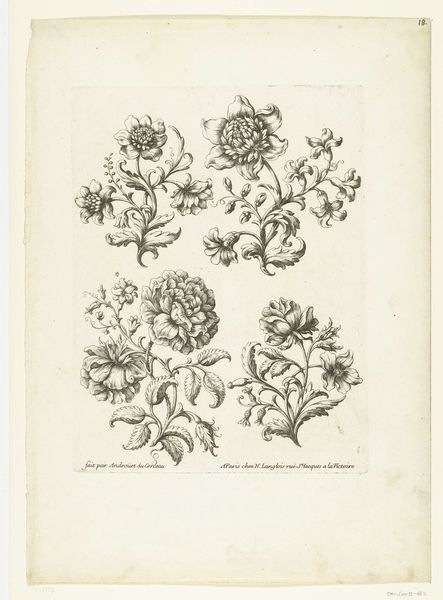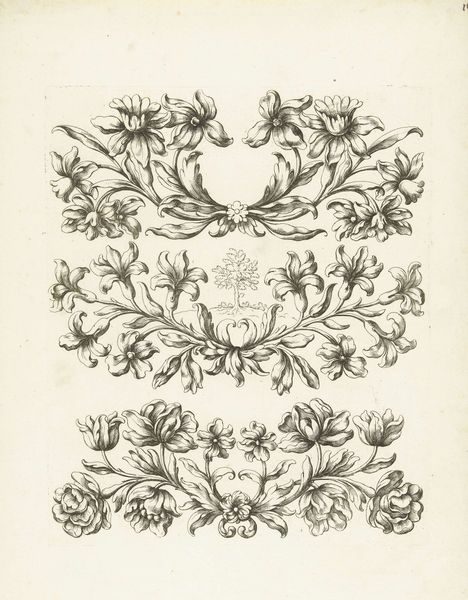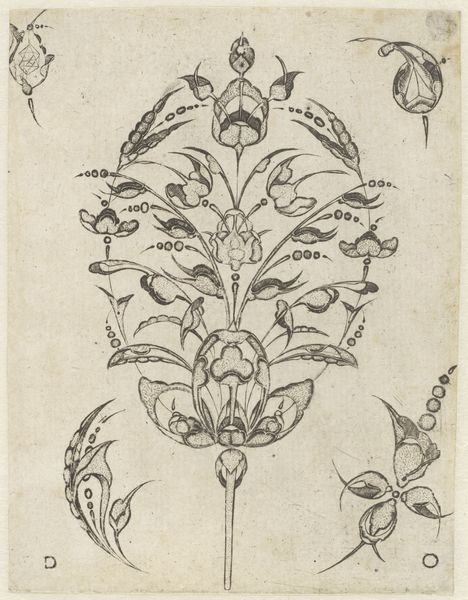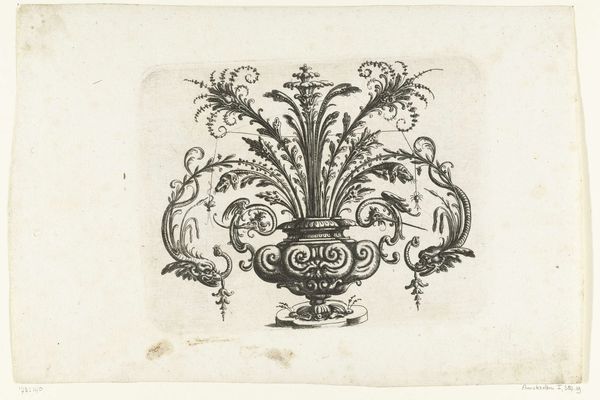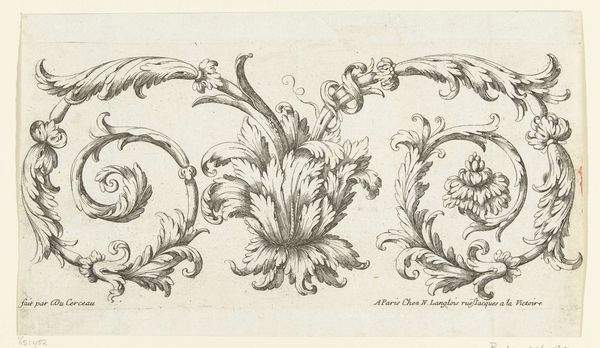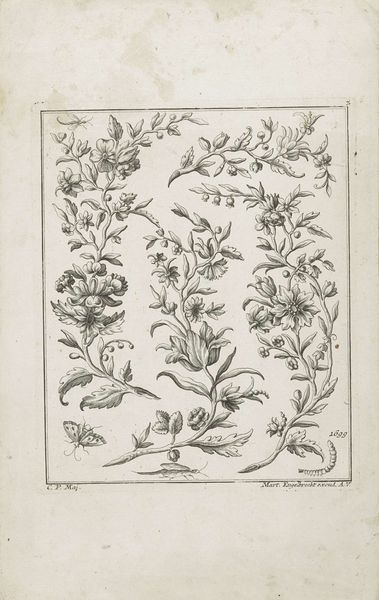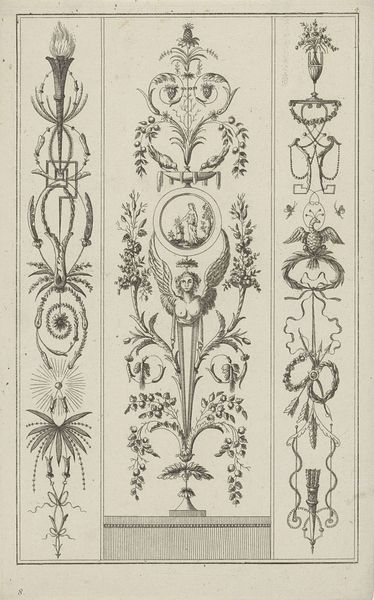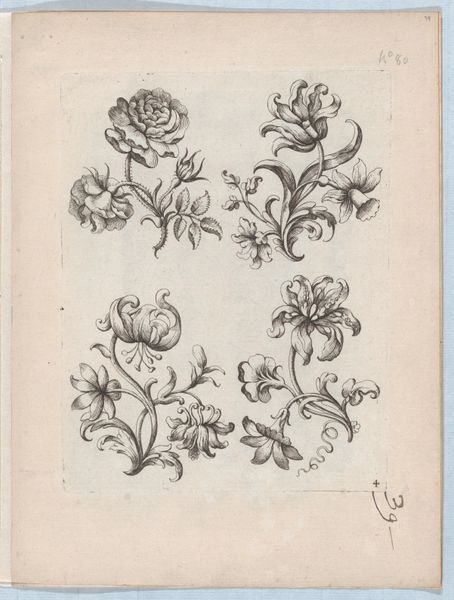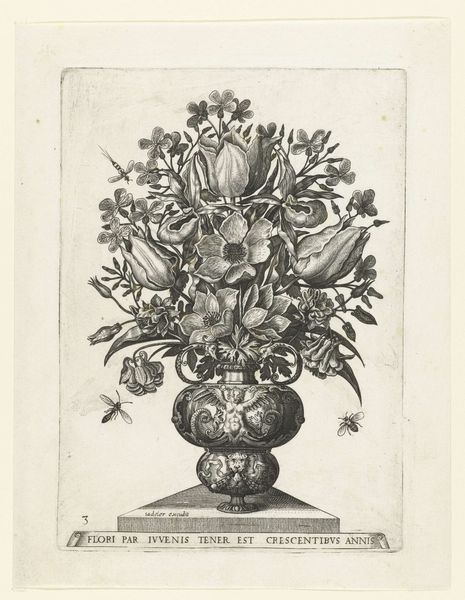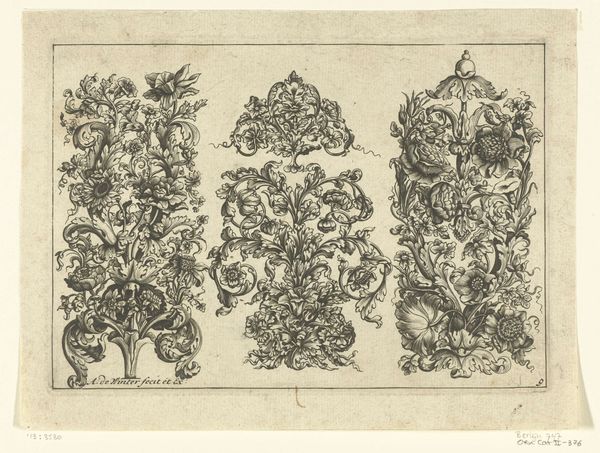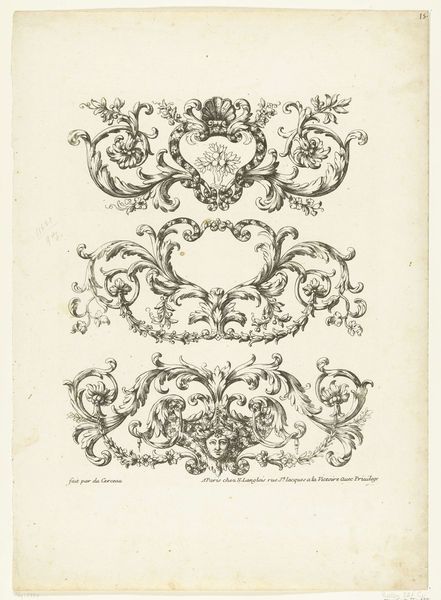
drawing, print, ink, engraving
#
drawing
#
baroque
# print
#
ink
#
line
#
decorative-art
#
engraving
Dimensions: height 287 mm, width 201 mm
Copyright: Rijks Museum: Open Domain
Curator: Here we have "Three Friezes of Leaves and Flowers," an engraving by Paul Androuet Ducerceau, created around 1670 to 1685. My initial impression is how precisely the artist rendered these botanical forms. Editor: Yes, the crisp lines create an almost scientific feel, yet the arrangement has a clear decorative intention, typical for Baroque era design. I immediately think about how such floral patterns reflected broader societal trends that were associated with class, access, and colonial desire for these botanicals. Curator: Precisely. Observe how each frieze presents variations on a theme, balancing symmetry with organic asymmetry. The play of light and shadow, achieved through delicate hatching, models the three-dimensionality that emphasizes the inherent visual appeal. Editor: The choice of specific flowers isn’t random. The aristocracy was consumed with controlling these “natural” wonders in enclosed, highly cultivated environments, no? How do the colonial dimensions play out here, reflecting the control over land, production, and aesthetic ideals back onto elite taste and notions of sophistication? Curator: An interesting reading. To return to formal elements, consider the use of line. The confident, unwavering strokes suggest an engraver at the peak of their technical prowess, skillfully evoking textures and subtle gradations in tone. It is truly exceptional when we assess its linear sophistication, which speaks to Baroque ideals about perspective and surface. Editor: I cannot detach the design’s visual harmony from its historical context of imperialism. Even the desire for “perfection” or control manifested here can be contextualized alongside these political-historical forces, when you study it closely and historically. These images become intertwined with systems of resource control and exoticization. Curator: Indeed. Ultimately, "Three Friezes" is more than a pleasing decorative artwork; it represents the intersection of careful formal arrangement alongside design intention. Editor: Exactly, this forces us to confront how botanical images serve ideological as well as aesthetic functions in this historical setting. Both views are valuable for grasping the print's complex legacy.
Comments
No comments
Be the first to comment and join the conversation on the ultimate creative platform.
